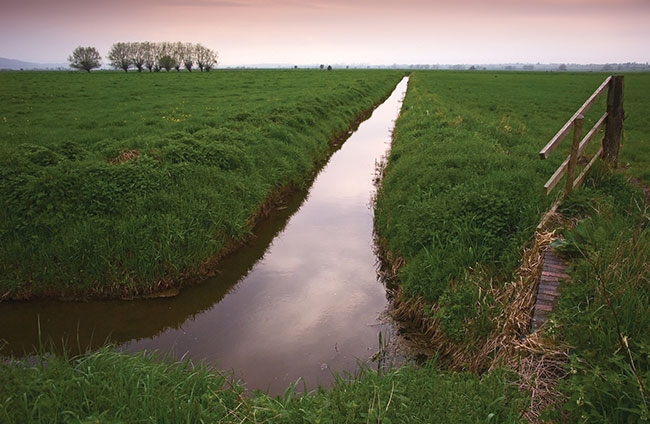
Features
Contractor at Work
Guest Column
Innovation revisited
How do we encourage change and adoption of new practices?
October 23, 2018 By Jacqui Empson Laporte
 I previously wrote an article about barriers to adoption of innovative drainage practices.
I previously wrote an article about barriers to adoption of innovative drainage practices.I previously wrote an article about barriers to adoption of innovative drainage practices. Those barriers included risk aversion, practices of adjacent landowners, economics and local conditions.
I’ve putting some thought into the construction of a funding/education program that would help us all move past some of these barriers.
A simple program includes a list of technical support, equipment or materials that are funded under the program. The rationale behind these types of programs is that if assistance is provided to purchase what is needed, then the new actions, technology or practice will be adopted. An example might be a program that provides 30 per cent of the cost of a no-till drill, or up to $20 per acre for cover crop seeds. These types of programs are simple to understand, easier to administer, and provide the tools people need to adopt a new practice.
Supporting farmers, contractors, and practitioners in making this change is important. However, a question about effectiveness remains – are the people who participate in this type of program the ones who had already decided to adopt this BMP? Is the cost of the equipment or materials the barrier to adoption? I would suggest that the bigger cost or risk to adopting a new BMP is not the equipment or materials, but the implementation and troubleshooting.
There is also that fine balance between extension and outreach, and allowing the farmer/contractor the opportunity to learn and explore on their own. Extension and funding programs (at least in Ontario) tend to be short term and heavy on the front end. The assistance in the longer term, after implementation, is harder to account for and fund because we don’t know what we don’t know. What advice, support or assistance will the farmers and contractors need? What data, outcomes or information will we, as extension specialists, need?
If the real barrier is implementation, then how do we encourage those producers to try a new practice? Take a risk? Evaluate the results and adjust accordingly? If we were interested in program effectiveness, we measure not what practices the person did, but whether or not they moved along a spectrum of innovation. What is innovative for one person is old news for another. If we were to rank farmers and contractors on a spectrum of innovation of one (being low) and 10 (high), we would find that those ranked higher are the ones that we tend to promote as speakers, landowner ambassadors and champions. How can we work with the ones ranked lower?
Some ideas that I’ve had to make this work include:
- Similar to a career test where people answer questions and the outcome provides advice on potential suitable careers, what if we had a way of asking questions to identify and rank someone’s risk tolerance? Willingness to adapt? That would provide a baseline measurement to track progress.
- Is education really a barrier? From mentoring, field days, trade shows and local programs to Twitter and YouTube, there are tons of formal and informal opportunities to learn new things in agriculture. How do we help match people to the opportunities that suit them the best? Can we prevent people from being overwhelmed at information overload, and simply try to point them towards step one?
- Could we implement an equipment co-op or lending program that allowed a farmer or contractor to try out a piece of equipment to test it before making a purchase that might end up being a costly mistake? This happens on an ad hoc basis already, when neighbours, friends or family share equipment.
- What if we encouraged people to do test plots and paid them for any yield drops that could be attributed to the trial? (This focuses on the activity and learning, not the tools themselves).
- Is there some type of precision ag tool or technology that could allow us to monitor and take appropriate actions, so that the risks, troubleshooting, opportunities or benefits could be addressed sooner?
I’m always interested in hearing from farmers and contractors. What do you think would – or wouldn’t – work when it comes to implementing programs?
Jacqui Empson Laporte is an environmental specialist and a member of the drainage team for the Ontario Ministry of Agriculture, Food and Rural Affairs. She is also a director on the board of Innovative Farmers Association of Ontario, and is responsible for managing projects related to Lake Huron water quality. Her interest is the design of environmental programs.
Print this page